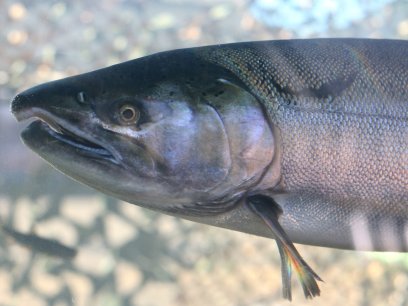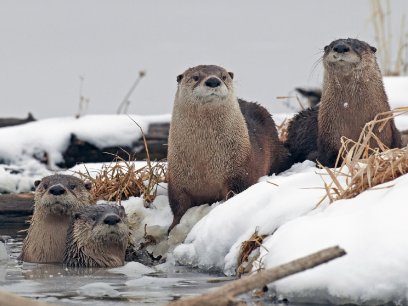
Goldfinches chirp as they fly back and forth over a babbling brook, avoiding the commotion of the children splashing through the shallow banks. While this play may seem frivolous, crossing streams and hiking through the woods, the kids are also serving a much more serious cause. This activity is part of a community-wide stream cleanup, with the goal of keeping the stream healthy to maintain clean water, protect property, and open up recreational opportunities.
The Importance of Watersheds
On a warm April morning, community members of Longbranch, Virginia mobilized with the support of Fairfax County Park Authority to clean up the local creek. Cleaning up trash can be important to maintaining land that drains to a stream, lake, or river, also known as a watershed. Bryan Campbell, who helped organize the watershed cleanup, says “The park itself is used as a recreational resource. People are going into the streams.” In addition to outdoor recreation, other benefits of a healthy watershed include clean drinking water, reduced flood costs and damage, and increased property values.
However, polluted waters can jeopardize all of these benefits. Campbell, who is president of Friends of Longbranch Stream Valley in Fairfax, Virginia, adds that “From an environmental standpoint, a damaged watershed has effects more so downstream. Banks erode away⦠blocking sewer systems⦠[taking] away availability for fish and other aquatic organisms to move up and down stream.” Campbell also emphasizes that, “The importance of having a healthy watershed permeates out to more than just the environment, but it also affects people's properties and their ability to enjoy the resources that we have here.”
Protect Your Property
A man approaches, asking Campbell about a stream near his backyard that is backed up with trash. Clogged culverts have led to backwater flooding on his property, and he is looking to the county to remedy the problem. Though his backyard is particularly affected by trash buildup, everyone who lives on land in the US has a stake in the watershed. Campbell's organization is a community-based group that advocates for and supports resources of the county that help restore the streams. Since all people who live in a community are stakeholders in the watershed, “these cleanups have to be community-based,” Campbell says.
By taking part in cleanups like the one in Longbranch Stream Valley, the whole community can get involved in being a part of the solution. “Ever since we've started [these cleanups], the amounts of trash we've collected has been less and less each year,” Campbell says. In addition to these cleanups, Campbell attributes the success of the cleaner watershed to “an overall change in mentality. Using re-usable water bottles, not using the park as a dump, [and] keeping people in the park,” have helped to reduce overall pollution.
Recreational Opportunities Galore!
In addition to all the benefits to the community, many participants join in just for fun. The watershed cleanup is “a good way to get outside,” says Monica Tucker-Harley, mother of several girls participating in the cleanup. She cares about clean streams because “the kids play out in the creek.” Most of all, she enjoys seeing “how excited the girls are to do [the cleanup]. They like it when they find good stuff.” Some of the trash found in the stream included plastic bags, aprons, and even a ceramic tea set.
Communities like this around the country are working together to maintain the benefits of clean waterways. Campbell's advice for anyone looking to get started in improving their local watershed is to “be activeâ¦[and] get involved in other people's events.” You can get involved in your community and participate in local watershed cleanups. There are also many other easy things you can do to protect your drinking water and environmental resources.
Sources:
- US Environmental Protection Agency. 2018. “Benefits of Healthy Watersheds.” Accessed April 30. https://www.epa.gov/hwp/benefits-healthy-watersheds
- US Environmental Protection Agency. 2018. “Healthy Watersheds Protection.” Accessed April 30. https://www.epa.gov/hwp/basic-information-and-answers-frequent-questions


